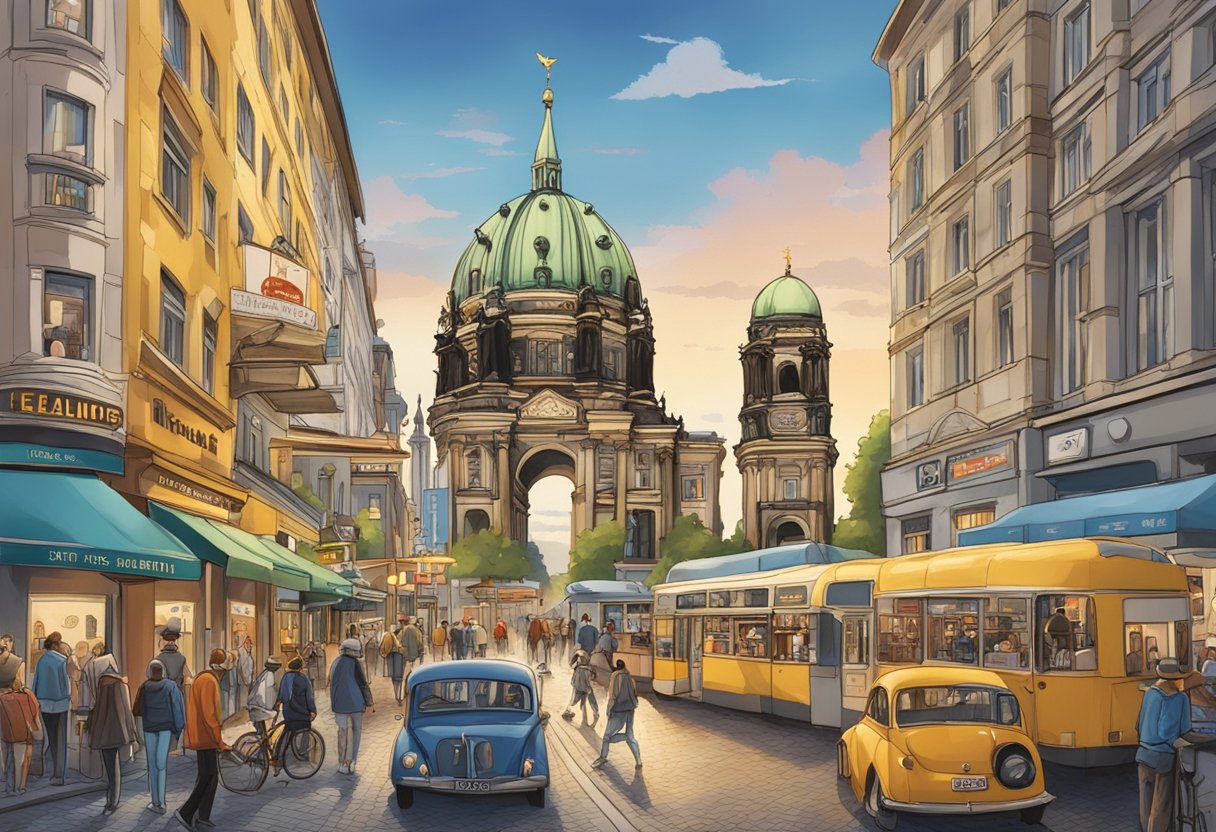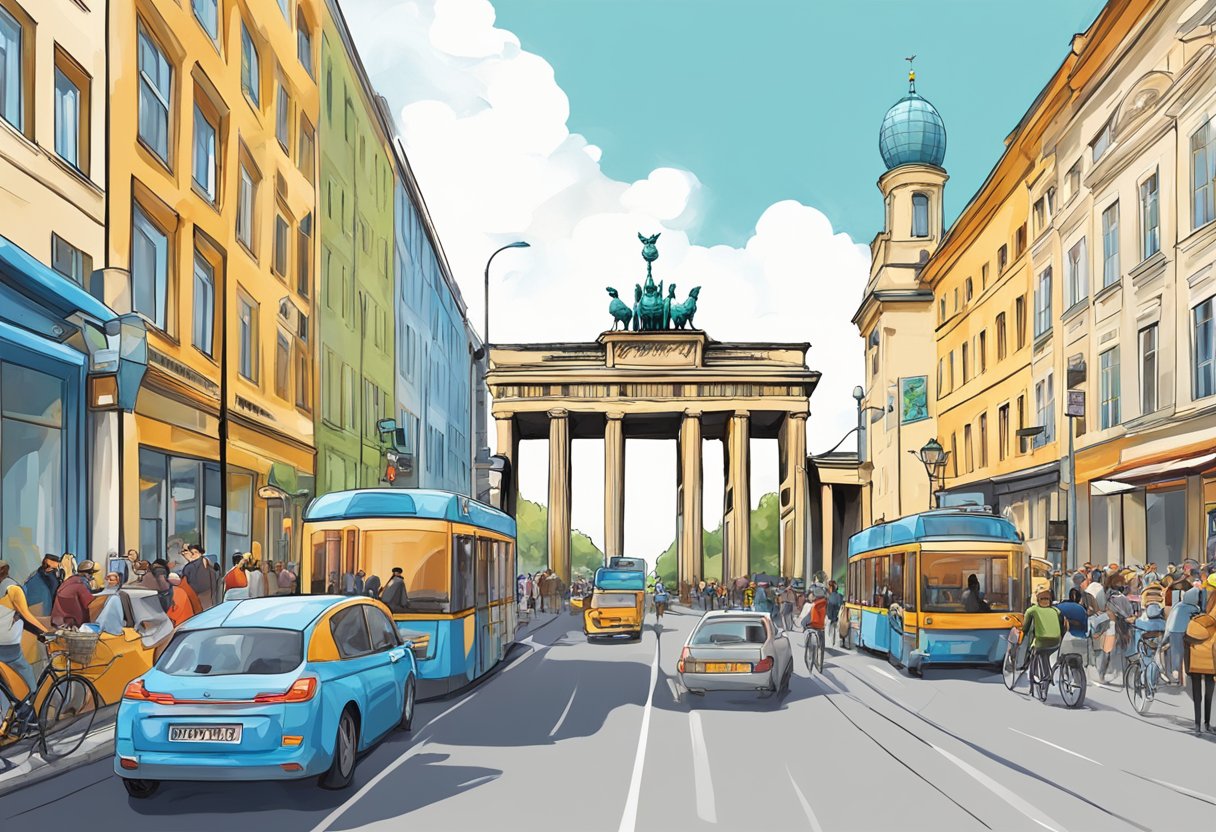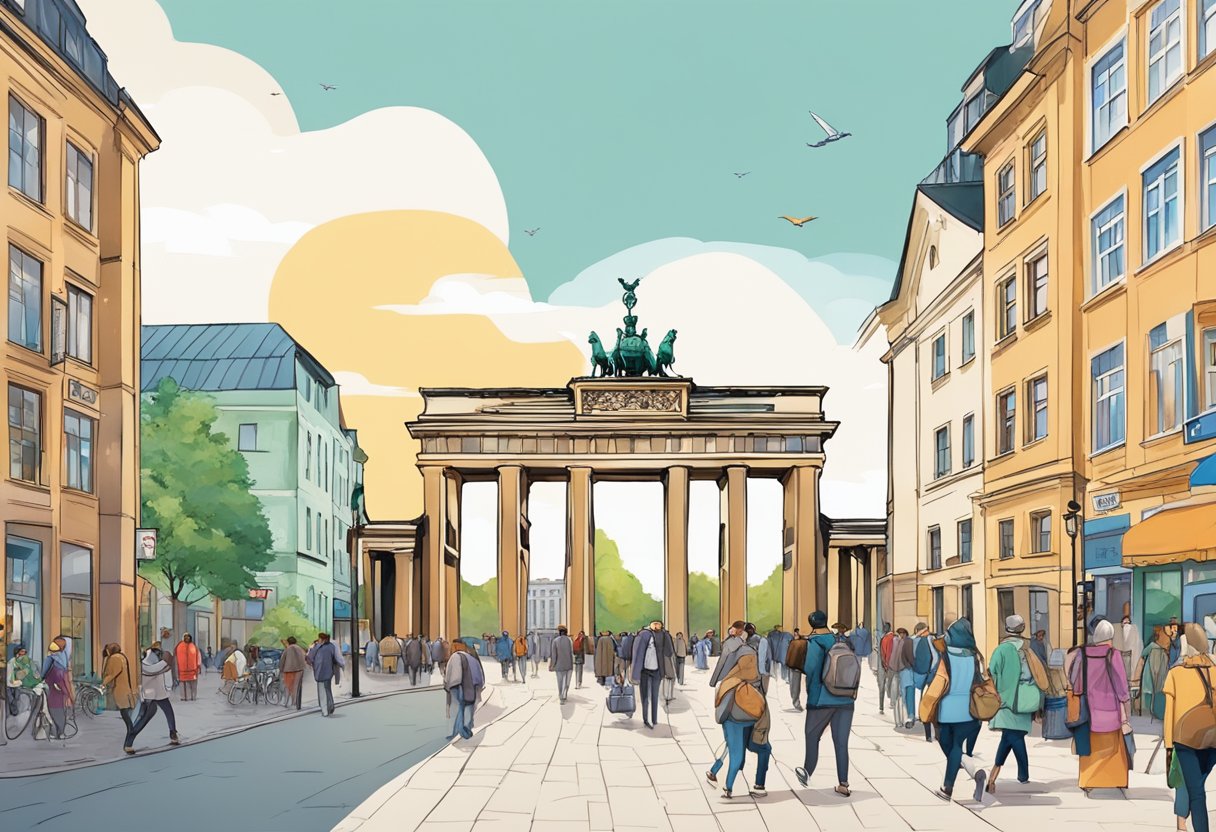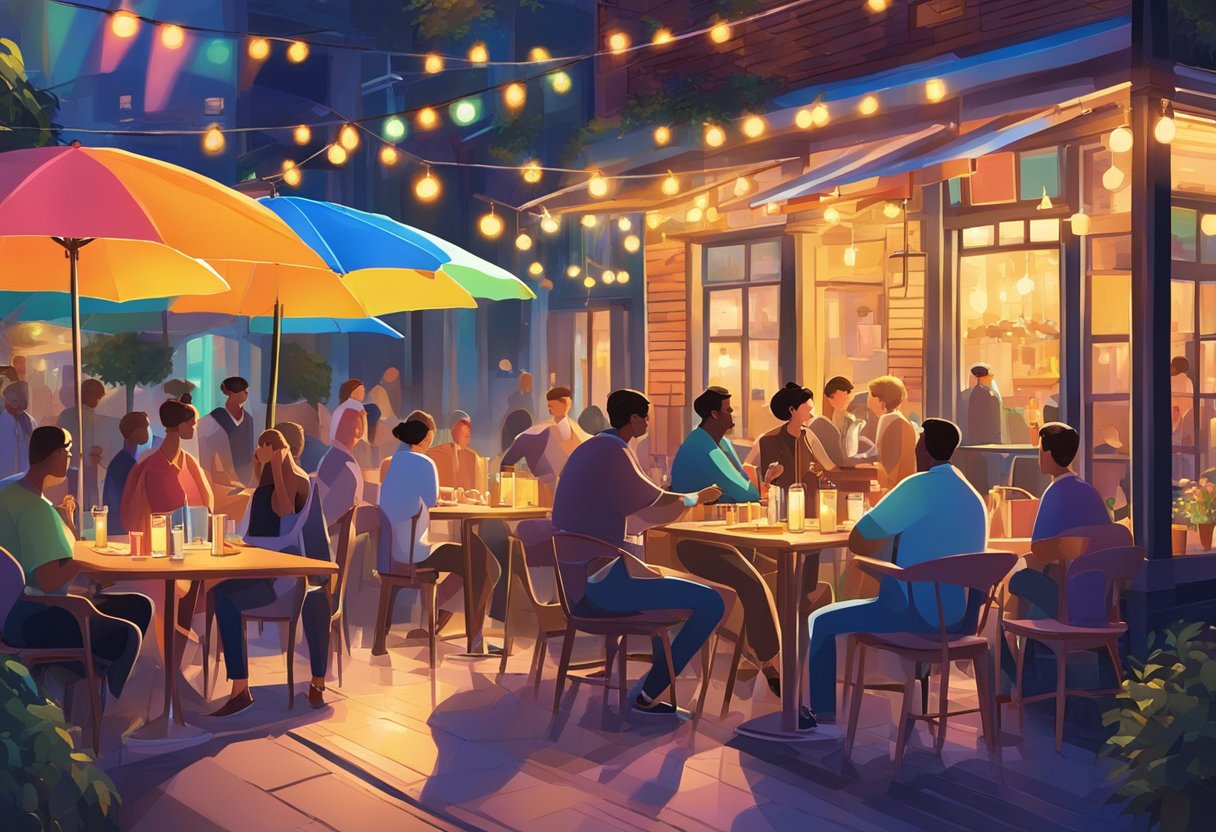Berlin, the capital city of Germany, is a vibrant metropolis that offers something for everyone. From iconic landmarks to world-class museums and art galleries, beautiful parks, and picturesque riverbanks, Berlin is a city that you can explore for days without getting bored.
In this article, we will share with you our five days in Berlin, including the must-see sights, off-the-beaten-path gems, and day trips.

When planning a trip to Berlin, it’s important to consider your travel time and arrival. Berlin has two airports, Tegel and Schönefeld, both of which are well connected to the city center. If you’re arriving by train, Berlin has several train stations, with the main station being Berlin Hauptbahnhof. Once you arrive in Berlin, we recommend getting a Berlin Welcome Card, which gives you unlimited access to public transport and discounts on many attractions.
Our 5-day Berlin itinerary is designed for visitors who want to make the most of their trip to this incredible city. We’ll start with the must-see sights on days 1 through 3, go off the beaten path on day 4, and take a day trip on day 5. Whether you’re a first-time visitor or a seasoned traveler, our trip plan will help you explore Berlin with ease.
Planning Your Trip

When planning a trip to Berlin, it is important to consider the best time to visit, accommodation options, and transportation overview.
Best Time to Visit
Berlin is a year-round destination with a lot to offer. However, the best time to visit depends on your preferences. Summer months (June to August) are perfect for outdoor activities, festivals, and events. Spring and fall are ideal for sightseeing and enjoying the city’s cultural scene, while winter is perfect for experiencing Berlin’s Christmas markets and winter activities.
Accommodation Options
Berlin offers a wide range of accommodation options to suit different budgets and preferences. From luxury hotels to budget hostels, there is something for everyone. When choosing accommodation, it is important to consider the location and proximity to public transportation. Some popular areas to stay in Berlin include Mitte, Prenzlauer Berg, and Friedrichshain.
Transportation Overview
Getting around Berlin is easy and convenient thanks to the city’s extensive public transportation system. The S-Bahn and U-Bahn are the most popular modes of transportation, with trains running frequently throughout the day and night. We recommend purchasing a Berlin Welcome Card, which offers unlimited travel on public transportation and discounts on popular attractions.
Overall, planning your trip to Berlin can be an exciting and rewarding experience. By considering the best time to visit, accommodation options, and transportation overview, you can ensure a smooth and enjoyable trip.
Historical Context
When visiting Berlin, it’s impossible to ignore the city’s rich and complex history. From the rise of Hitler and the Nazi regime to the fall of the Berlin Wall and the reunification of Germany, Berlin’s past has shaped the city into what it is today. In this section, we will explore some of the most significant historical events and their impact on Berlin.
The Cold War Era
After World War II, Germany was divided into two separate countries: West Germany and East Germany. Berlin, located in the eastern part of Germany, was also divided into two: East Berlin and West Berlin. This division led to the construction of the Berlin Wall in 1961, which separated the two parts of the city. The wall became a symbol of the Cold War and remained a physical and ideological barrier until it was torn down in 1989.
The Berlin Wall
The Berlin Wall was a physical manifestation of the Cold War and the division of Germany. The wall was heavily guarded, and many East Germans lost their lives trying to cross it. Today, the Berlin Wall is a popular tourist attraction, with several sections still standing. The East Side Gallery, a section of the wall covered in murals, is a particularly popular spot.
Reunification of Germany
The fall of the Berlin Wall in 1989 marked the beginning of the end of the Cold War. The reunification of Germany followed in 1990, and Berlin became the capital of a united Germany. Today, the city is a symbol of hope and unity, and its vibrant culture and history attract millions of visitors each year.
Overall, Berlin’s history is a complex and fascinating subject, and it’s impossible to cover all of it in one section. However, by exploring some of the most significant events, we can gain a better understanding of the city and its place in the world. Whether you’re interested in the Reichstag, the Holocaust, or the Stasi, Berlin has something to offer for everyone.
Iconic Landmarks

Berlin is home to some of the most iconic landmarks in Europe. From the historic Brandenburg Gate to the stunning Charlottenburg Palace, the city is full of architectural wonders that are sure to leave a lasting impression. In this section, we’ll highlight some of the most famous landmarks that you simply can’t miss during your five days in Berlin.
Brandenburg Gate
No trip to Berlin is complete without a visit to the Brandenburg Gate. This iconic landmark is one of the most recognizable symbols of Germany and is a must-see for any tourist. Built in the 18th century, the gate has played a significant role in German history, serving as a backdrop for some of the country’s most important events. Today, it stands as a symbol of unity and peace, and is a popular spot for tourists to take photos.
Checkpoint Charlie
Checkpoint Charlie is another landmark that played a significant role in German history. During the Cold War, Checkpoint Charlie was the main crossing point between East and West Berlin. Today, the checkpoint has been turned into a museum, where visitors can learn about the history of the Berlin Wall and the role that Checkpoint Charlie played in dividing the city.
Reichstag Building
The Reichstag Building is home to the German Parliament and is one of the most impressive examples of contemporary architecture in Berlin. The building was designed by British architect Norman Foster and features a stunning glass dome that offers panoramic views of the city. Visitors can take a guided tour of the building and learn about the history of the German Parliament.
Berlin Cathedral
The Berlin Cathedral is a stunning example of Baroque architecture and is home to one of the largest church domes in the world. Visitors can take a guided tour of the cathedral and learn about its history and architecture. The cathedral also offers stunning views of the city from its dome.
Charlottenburg Palace
Charlottenburg Palace is one of the most beautiful and impressive palaces in Germany. Built in the 17th century, the palace features stunning Baroque architecture and is surrounded by beautiful gardens. Visitors can take a guided tour of the palace and learn about its history and architecture, or simply stroll through the gardens and enjoy the beautiful scenery.
Overall, Berlin is a city full of architectural wonders and iconic landmarks. Whether you’re interested in history, architecture, or simply want to take in the sights, there’s something for everyone in this vibrant city.
Cultural Attractions

Berlin is a city steeped in culture, with a rich history that is reflected in its many museums, galleries, and memorials. Here are some of the top cultural attractions that we recommend visiting during your five days in Berlin.
Museum Island
Museum Island is a UNESCO World Heritage Site and home to several remarkable museums. The island is located in the middle of the Spree River and is one of the most popular tourist destinations in Berlin. You can explore the many museums on the island, which house some of the world’s most important collections of art and artifacts. Don’t miss the Pergamon Museum, where you can marvel at ancient artifacts and impressive reconstructions, like the famous Ishtar Gate.
East Side Gallery
The East Side Gallery is a 1.3 km section of the Berlin Wall that is covered in murals and graffiti. It is the longest open-air gallery in the world and a must-visit for anyone interested in street art and modern culture. The gallery is located in the Friedrichshain-Kreuzberg district and is easily accessible by public transportation.
Topography of Terror
The Topography of Terror is an outdoor and indoor museum located on the site of the former Gestapo and SS headquarters. The museum documents the history of the Nazi regime and the atrocities committed during World War II. The exhibition is both informative and moving, and provides a sobering reminder of the dangers of extremism and totalitarianism.
Jewish Museum
The Jewish Museum is one of the largest and most important Jewish museums in Europe. The museum documents the history of the Jewish people in Germany, from the Middle Ages to the present day. The exhibition is both informative and moving, and provides a sobering reminder of the dangers of anti-Semitism and prejudice.
Overall, Berlin is a city that is rich in culture and history, and there are many museums and memorials that are worth visiting during your stay. Whether you are interested in art, history, or modern culture, there is something for everyone in this vibrant city.
Exploring the Neighborhoods

When it comes to exploring Berlin, the city’s neighborhoods offer a wide range of experiences. Here are a few of our favorites:
Mitte and Its Historical Core
As the historical center of Berlin, Mitte is home to many of the city’s most iconic landmarks and attractions. From Alexanderplatz and Unter den Linden to Potsdamer Platz and the Gendarmenmarkt, there’s no shortage of things to see and do in this bustling neighborhood. We recommend starting your exploration at the Nordbahnhof, where you can visit the Palace of Tears and learn about the history of the Berlin Wall.
Trendy Kreuzberg
Kreuzberg is known for its vibrant street art, trendy cafes, and diverse population. This neighborhood is a great place to explore if you’re looking for a more alternative side of Berlin. Check out the many galleries and boutiques along Oranienstrasse, or relax in one of the many parks and green spaces that dot the area.
Prenzlauer Berg and Friedrichshain
Prenzlauer Berg and Friedrichshain are two of Berlin’s most popular neighborhoods, known for their bohemian vibe and lively nightlife. In Prenzlauer Berg, be sure to check out the Kulturbrauerei, a former brewery that now houses a variety of shops, restaurants, and cultural events. In Friedrichshain, head to the Karl-Marx-Allee to see some of the city’s most impressive examples of socialist architecture.
No matter which neighborhoods you choose to explore, you’re sure to find plenty of things to see and do in Berlin. Don’t miss the chance to visit iconic landmarks like the KaDeWe and the Kurfürstendamm, or to simply wander the streets and soak up the city’s unique atmosphere.
Dining and Nightlife

When it comes to dining and nightlife in Berlin, we are spoiled for choice. The city is home to a diverse range of restaurants, bars, and clubs, catering to all tastes and budgets. In this section, we will cover some of the best dining and nightlife options in the city, including traditional German cuisine, vegetarian and vegan options, and bars and clubs.
Traditional German Cuisine
No trip to Berlin is complete without trying some traditional German cuisine. From currywurst to schnitzel, the city has plenty of hearty dishes to offer. For a classic Berlin experience, we recommend heading to Treffpunkt Berlin, a popular restaurant serving up traditional German dishes in a cozy, rustic setting. If you have a sweet tooth, be sure to stop by Rausch Schokoladenhaus, a chocolate shop and café that has been delighting locals and tourists alike since 1918.
Vegetarian and Vegan Options
Berlin is known for its thriving vegetarian and vegan scene, with plenty of options for those who prefer plant-based cuisine. For a delicious vegan meal, we recommend heading to La Stella Nera, a cozy Italian restaurant that serves up some of the best vegan pizza in the city. If you’re in the mood for something more exotic, try out Chay Village, a Vietnamese restaurant that specializes in vegetarian and vegan dishes.
Bars and Clubs
Berlin is famous for its nightlife, with a plethora of bars and clubs to suit all tastes. For a laid-back evening, we recommend heading to Klunkerkranich, a rooftop bar that offers stunning views of the city. If you’re in the mood for something a bit more lively, try out Tresor, one of the city’s most iconic techno clubs. No matter what your nightlife preferences are, Berlin has something to offer.
Leisure and Nature
When we want to take a break from the hustle and bustle of the city, Berlin offers plenty of options to relax and enjoy nature. Here are some of our favorite spots:
Tiergarten Park
At the heart of the city lies the beautiful Tiergarten Park. With over 520 acres of greenery, it’s the perfect place to unwind and take a stroll. We recommend renting a bike to explore the park’s many paths and hidden corners. Don’t miss the picturesque Neuer See lake and the famous Berlin Victory Column, which offers stunning views of the city.
Riverbanks and Lakes
Berlin is home to many lakes and riverbanks that offer a peaceful retreat from the city. Take a walk along the Spree River and enjoy the views of the city’s many bridges and landmarks. For a more secluded experience, head to one of the nearby lakes such as Schlachtensee or Wannsee. These lakes offer swimming, boating, and hiking opportunities, as well as beautiful scenery.
Alternative Activities
For a more unique experience, we recommend visiting the Teufelsberg. This former Cold War listening station is now a popular spot for urban explorers and street artists. Take a guided tour to learn about the history of the site and see the incredible graffiti art that covers the buildings.
Another alternative activity is visiting the Mauerpark and the Berlin Wall Memorial. Mauerpark is a popular spot for locals and visitors alike, with its famous flea market and lively atmosphere. The nearby Berlin Wall Memorial offers a sobering reminder of the city’s divided past, with exhibits and displays that tell the story of the wall and its impact on the city. Finally, the Platform 17 Memorial is a moving tribute to the victims of the Holocaust, with plaques detailing the stories of those who were deported from the nearby Grunewald train station.
In conclusion, Berlin offers plenty of options for those who want to relax and enjoy nature. Whether you prefer a peaceful walk in the park or a more unique experience, there’s something for everyone in this vibrant city.
Practical Information
Getting Around the City
Berlin is a very walkable city, and we highly recommend exploring it on foot. However, if you need to get around quickly or cover longer distances, the public transportation system is very efficient and easy to use. The U-Bahn and S-Bahn trains, as well as the buses and trams, run regularly and cover the entire city. We recommend getting a Berlin WelcomeCard for 5 days, which not only offers discounts on many attractions but also includes unlimited travel on all public transportation.
Shopping Destinations
Berlin is a great city for shopping, with a wide variety of stores and markets to choose from. One of the most popular shopping destinations is Kurfürstendamm, a long boulevard lined with high-end boutiques and department stores. If you’re looking for something more unique, head to the trendy neighborhood of Kreuzberg, which is home to many independent shops and vintage stores. For a more traditional shopping experience, check out the weekly markets such as the Mauerpark Flea Market, where you can find everything from vintage clothing to handmade crafts.
Useful Tips for Travelers
Here are a few tips to help you make the most of your trip to Berlin:
- Berlin is a very bike-friendly city, and there are many bike rental shops throughout the city. Biking is a great way to explore the city and get some exercise at the same time.
- Berlin is a cash-based society, so make sure to have plenty of Euros on hand. While most restaurants and shops accept credit cards, some smaller businesses may only accept cash.
- Berlin is a very multicultural city, and you can find food from all over the world. Don’t miss the chance to try some of the local specialties, such as currywurst or schnitzel.
- If you’re visiting in the summer, be sure to bring sunscreen and a hat, as temperatures can get quite hot. In the winter, be prepared for cold temperatures and snow.